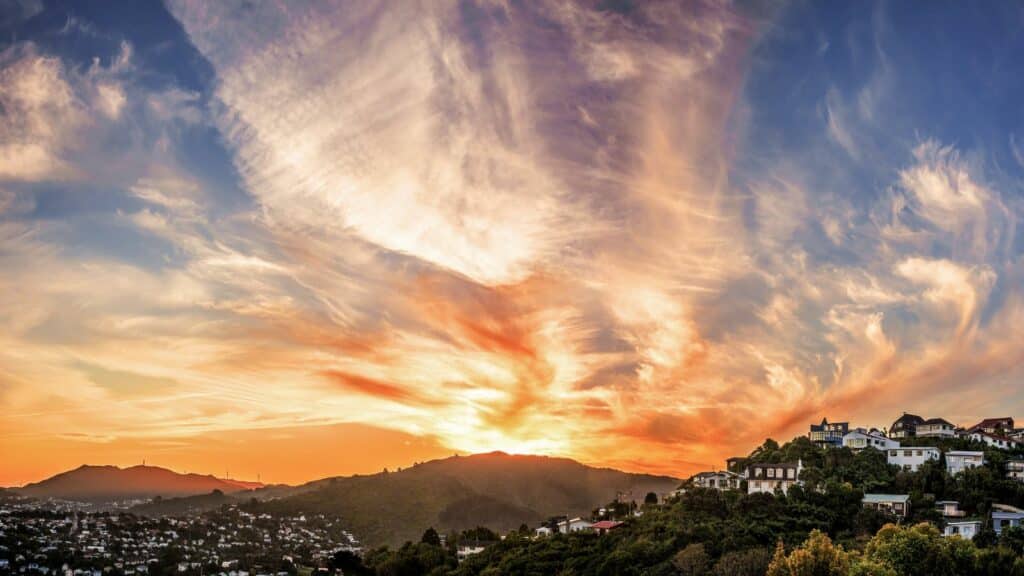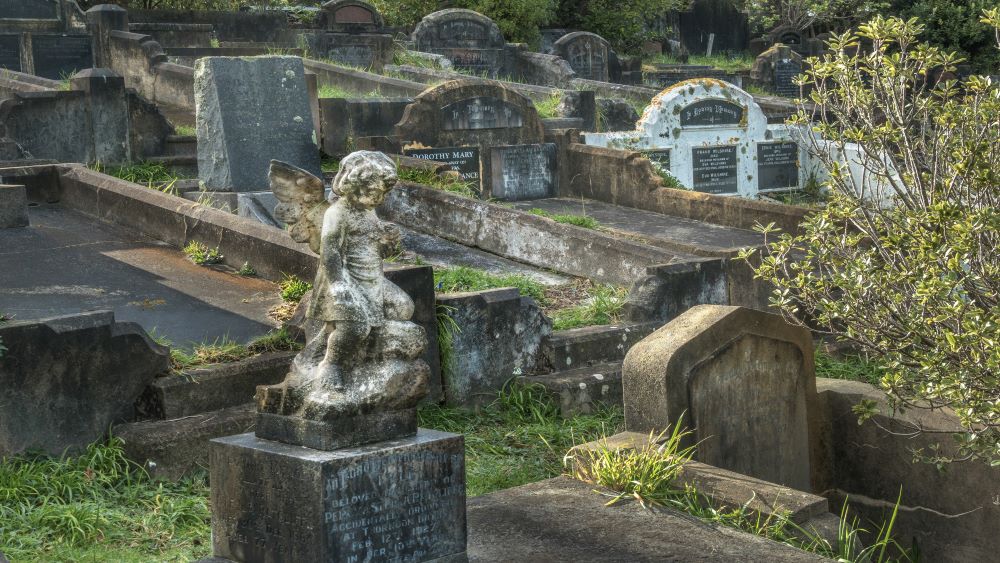Karori’s story begins long before the arrival of European settlers. The area was initially inhabited by the Māori, who valued its fertile land and abundant resources. Kaharore, which was the original Māori name for Karori, literally means ‘the ridge for snaring birds‘. Traditionally, Māori used a rore (snare) to catch kākā, kererū and other forest birds, hence where the name came from.
The European Arrival Brought Farming and Industry
The arrival of European settlers to New Zealand in the 19th century marked a turning point in Karori’s history, bringing with it significant changes that would shape the suburb’s future. Karori’s fertile land and lush green hills made it an ideal location for farming, and settlers wasted no time in establishing farms and agricultural enterprises.
One of the key industries that emerged during this time was dairy farming. Karori’s rich soil and temperate climate were perfect for dairy cows, and many farms sprung up across the suburb. The dairy industry became a major employer in Karori, providing jobs and economic stability to the growing population.
Alongside farming, other industries also began to thrive in Karori. Sawmills were established to take advantage of the abundant timber resources in the area. At the same time, brickworks and pottery factories utilised the clay deposits found in the hills. These industries not only provided employment opportunities but also contributed to the growth and development of Karori as a community.
As Karori’s population grew, so too did the need for infrastructure and services. Schools, churches, and businesses began to appear, catering to the needs of the burgeoning community. Karori School, established in 1856, was one of the first schools in the area and played a vital role in educating the children of early settlers.
The 19th-century European settlers ushered in a period of remarkable growth and development in Karori. Their transformation from a rural landscape to a thriving community was a testament to their unwavering determination and hard work. They recognised the potential of this beautiful area and dedicated themselves to making it their home.
Karori Cemetery Is A Place of History and Remembrance
One of the most significant moments in Karori’s history was the establishment of the Karori Cemetery in 1866. This burial ground is the final resting place of many notable New Zealanders, including Katherine Mansfield, one of New Zealand’s most celebrated authors.
Katherine Mansfield and Her Wellington Connection
Katherine Mansfield, who was born Kathleen Mansfield Beauchamp in 1888, was a pioneering New Zealand writer who left an indelible mark on the world of literature. While she spent much of her adult life in Europe, Mansfield’s formative years were spent in Wellington, a city that would profoundly influence her work.
Mansfield was born into a prominent family in Wellington, where her father, Harold Beauchamp, was a successful businessman and her mother, Annie Beauchamp, was a talented pianist. The family lived in several homes around the city, including Tinakori Road and Karori, before eventually moving to England in 1908.
Despite leaving New Zealand at a relatively young age, Mansfield’s connection to Wellington remained strong throughout her life. She drew inspiration from her childhood experiences in the city. Often using its landscapes and people as the backdrop for her stories.
One of Mansfield’s most famous works, “Prelude,” is a semi-autobiographical account of her early years in Wellington. The story captures the essence of Wellington in the early 20th century, painting a vivid picture of the city and its inhabitants.
Today, Katherine Mansfield is celebrated as one of New Zealand’s greatest writers. And her connection to Wellington is commemorated in various ways. The Katherine Mansfield House & Garden in Thorndon, Wellington, is a museum dedicated to her life and work. Preserving the legacy of this remarkable writer for future generations to enjoy.
The Modern Era Brought Urbanisation and Growth
As the 20th century dawned, Karori underwent a period of significant urbanisation and growth. Transforming from a rural landscape into a bustling suburb. This transformation was driven by several key factors. Including the expansion of Wellington’s urban area, improvements in transportation infrastructure, and the increasing demand for housing.
One of the most significant changes during this period was the development of new housing estates to accommodate the growing population. Subdivisions such as Karori Park, built in the 1920s, provided affordable housing options for families looking to settle in the area. These new developments brought a diverse range of people to Karori, contributing to its vibrant and multicultural community.
Alongside the housing developments, new amenities were also established to cater to residents’ needs. Schools, shopping centres, and community facilities were built to serve the growing population, enhancing the quality of life in Karori.
Karori Today
Today, Karori stands as a vibrant suburb, a testament to its rich cultural heritage and the resilience of its residents. Its streets are a blend of old and new homes, a reflection of its journey over the years. The diverse population adds to its lively atmosphere, with a variety of cultural events and activities enriching the community throughout the year.
Despite its urbanisation, Karori has retained much of its natural beauty, with parks and green spaces scattered throughout the suburb. These areas, with their lush greenery and serene atmosphere, provide a peaceful retreat for residents. And contribute to Karori’s reputation as one of Wellington’s most desirable places to live.
Karori’s journey from a rural landscape to a thriving suburb is a testament to the resilience and adaptability of its residents. Their unwavering spirit and determination have shaped Karori into what it is today. Today, Karori continues to evolve, embracing its past while looking towards the future with optimism and enthusiasm.
Karori: Where the Past Meets the Present
Karori’s history is a tapestry of Māori tradition, European settlement, and modern development. It is a place where the past meets the present. And where stories of the past are kept alive for future generations to enjoy. So, next time you find yourself in Karori, take a moment to appreciate the history surrounding you and imagine the stories beneath its surface. As local plumbers in the Wellington region, we enjoy sharing the history of the areas we service.



